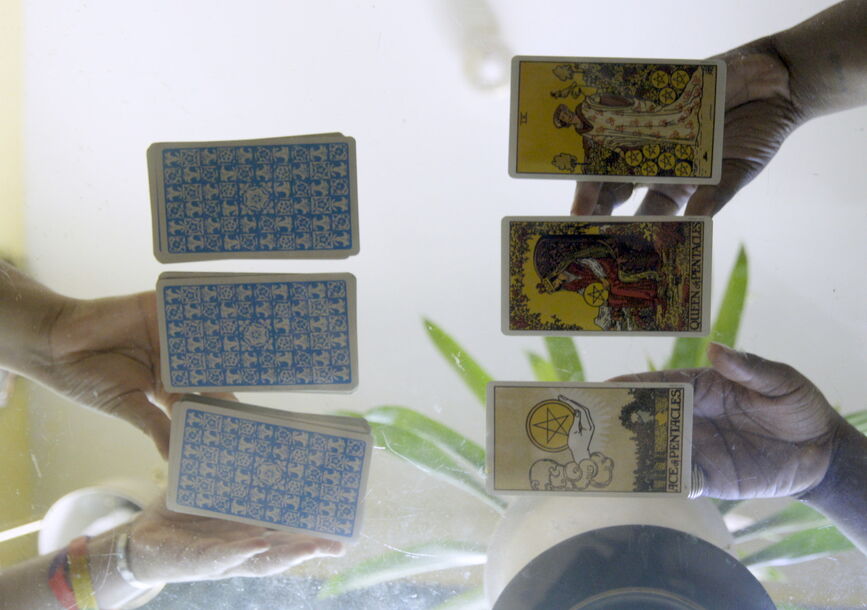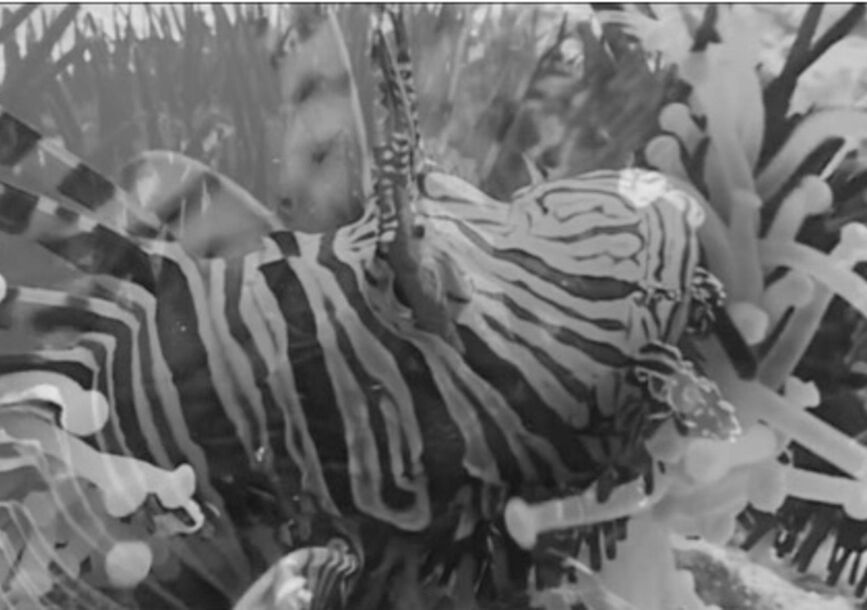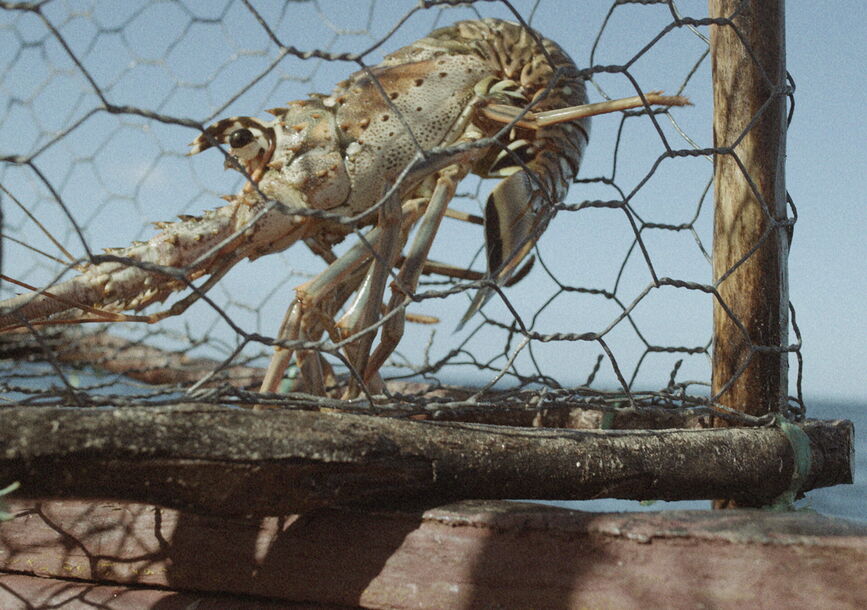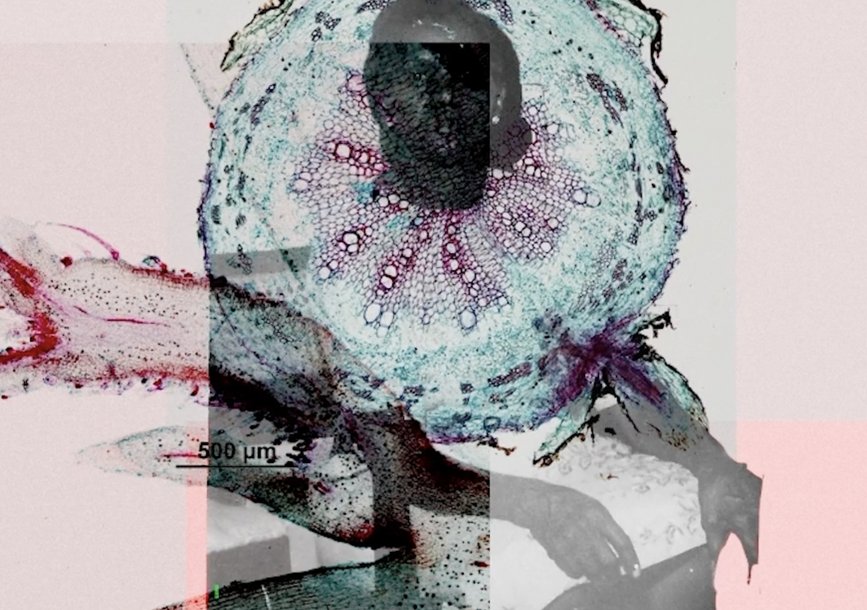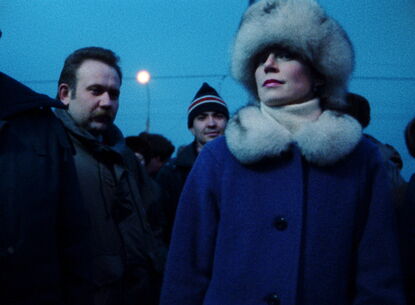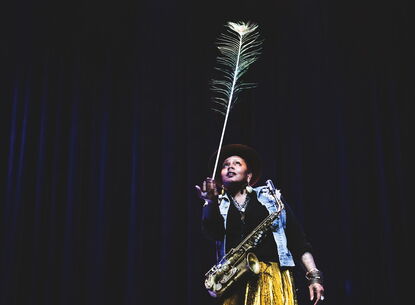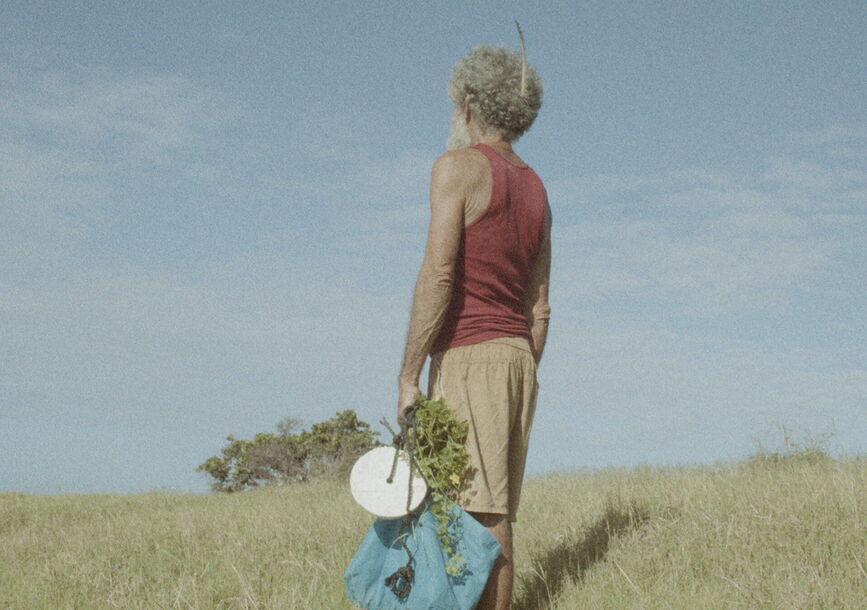
Deep in the Mud, We Are Enmeshed in All Its Forms
about the artists
Kearra Amaya Gopee
Kearra Amaya Gopee (they/them) is an anti-disciplinary visual artist from Carapichaima, Kairi (the larger of the twin-island nation known as Trinidad and Tobago), living on Lenape land (New York, New York). Using video, sculpture, sound, writing, and other media, they identify both violence and time as primary conditions that undergird the anti-Black world in which they work: a world that they are intent on working against through myriad collective interventions. They render this violence elastic and atemporal — leaving ample room for the consideration and manipulation of its history, implications on the present and possible afterlives. In the spirit of maroonage, they have been developing an artist residency in Trinidad and Tobago titled a small place — after Jamaica Kincaid’s book of the same name — due to begin in 2023.
They hold an MFA from University of California, Los Angeles as well as a BFA in Photography and Imaging from New York University. And they are an alum of the Skowhegan School of Painting and Sculpture. Additionally, they are a regional proxy for Black Lunch Table, and they obsess about artist residencies at asmall.place. If you are Black, feel free to reach out for the password to access a small place.
Simon Benjamin
Simon Benjamin is a Jamaican artist and filmmaker, whose multidisciplinary practice encompasses multi-sensory installations, sculptures, video, photographs, and printmaking. His practice considers how current realities are shaped by both visible and invisible histories. Using the framework of the sea and coastal space, his current body of work investigates the Caribbean’s complex relationship to trade, ocean travel, import-dominant consumerism, tourism, and other neo-colonial relationships imposed by the United States and the West. Benjamin received his MFA from Hunter College in New York City. His work has been exhibited at Documenta 15, Kassel, Germany (2022); Lower Manhattan Cultural Council, Governors Island, New York (2022); Kingston Biennial, National Gallery of Jamaica, Kingston, Jamaica (2022); trinidad+tobago film festival, Trinidad and Tobago (2021); NYU Gallatin at Governors Island, New York (2021); The 92nd Street Y, New York (2020); Brooklyn Public Library, New York (2019); Hunter East Harlem Gallery, New York (2019); the Ghetto Biennial, Port Au Prince, Haiti (2018); Jamaica Biennial, National Gallery of Jamaica, Kingston, Jamaica (2017); Virginia Commonwealth University, Richmond, Virginia (2019); New Local Space, Kingston (2016); and Columbia University, New York (2016). Benjamin will be an artist-in-residence at Baxter St at Camera Club of New York in 2022 and has participated in residencies at Light Work, Syracuse, NY; Lighthouse Works, Fishers Island, NY; Shandaken Projects and the Lower Manhattan Cultural Council, both on Governors Island in New York.
Tamika Galanis
Tamika Galanis, a Bahamian native, is a documentarian and multimedia visual artist. Tamika’s work examines the complexities of living in a place shrouded in tourism’s ideal during the age of climate concerns. Emphasizing the importance of Bahamian cultural identity for cultural preservation, Tamika documents aspects of Bahamian life not curated for tourist consumption to intervene in the historical archive. This work counters the widely held paradisiacal view of the Caribbean, the origins of which arose post-emancipation through a controlled, systematic visual framing and commodification of the tropics.
Tamika’s photography-based practice includes traditional documentary work and new media abstractions of written, oral, and archival histories. Hacking the Narrative is a multimedia project composed of photographs, film, and sculptural objects that shed light on the conditions in which Bahamians live outside of the mythical promise of paradise. Tamika earned a Masters of Fine Arts in Experimental and Documentary Arts from Duke University.
Aliyah Blackmore
Aliyah Blackmore is an Afro-Caribbean writer/researcher, DJ, and (copy) editor based in New York. Through their research and art making, Aliyah engages with the multi-dimensional threads, narratives, and histories that run through Caribbean and Black diasporic experiences. Through her making she seeks to deepen her understanding of how our modes of cultural production foster spaces of resistance and recovery. Themes of Caribbean cosmology, queerness, ancestral memory as spirituality, history, and place are central to her work.
list of films
how to break a horizon: a memory as retold by the sum of its residue (2019), 5 min.
Dir. Kearra Amaya Gopee. how to break a horizon: a memory as retold by the sum of its residue is part of an installation that considers queer Caribbean futurity for its diaspora in the face of impending ecological and social collapse.
Performers: Micha Borneo, Catherine Feliz, Celeste Walters; Harpist: Ahya Simone; Sound: Veniece Session; Camera: Grace Naw; Text/Direction: Kearra Amaya Gopee
Errantry (2021), 11 min.
Dir. Simon Benjamin. Errantry is an iterative multi-channel video installation that centers the polyphonic rhythms of the coastal space, the surrounding Caribbean Sea, and the life sustained by them. Shot on location on the south coast of Jamaica with fisherman and painter Tommy Wong.
A Thousand Points of Light (2018/2023), 20 min.
Dir. Tamika Galanis. “This video was installed as a part of my solo show, One Hurricane Season. The films are my family’s home movies. One Hurricane Season is a personal attempt to synthesize the fallout of events on the macro level by examining the micro: while Hurricanes Irma and Maria tore through the Caribbean, forcing residents to grapple with what it felt like to wake up to irreparable damage, dealt out overnight, my family and I were being forced to do the same — a sudden onset and progression of dementia left us with a shadow of the woman we know and love.” — Tamika Galanis
When the Lionfish Came (2015), 6 min.
Dir. Tamika Galanis. When the Lionfish Came is a six-minute experimental short film that juxtaposes the natural world with the cultural environment. This film uses metaphor to address both the effects of capitalism and climate change in the Caribbean — particularly The Bahamas. The lionfish — a predatory non-native species in the Atlantic — has wrought havoc on reef systems in the Atlantic Ocean since the early ’90s. The lionfish’s high rate of predation in the Atlantic is attributed to its appearance — to the rest of the reef, it looks like it belongs. Multiplying at unthinkable rates, the lionfish gorges on the reef until it is depleted and moves on. This film is an illustration of disappearing Bahamian culture (through Junkanoo and reef imagery), the palpability of the absence of real climate change initiatives, and the continued pursuit of capitalistic endeavors (tourism) despite cultural decline. Using both shot and found footage and rendered in black and white to counter ideas of the tropical ideal, this film posits that perhaps the lionfish came to provide a clear illustration of the region’s fate without intervention.
A protection, a calling (2021/2023), 5 min.
Dir. Aliyah Blackmore. The layered images in the video are clips of matrilineal family members, a hibiscus flower, and quick collaged glimpses of archival footage from Barbados, Trinidad, Tobago, and other parts of the Caribbean. The background sounds include personal recordings from Barbados at various moments of the day. There is the sound of a bird calling and light traffic in the distance. There is also a layered sound of a cutlass hitting a hard surface. The film experiments with the layering of image and sound as a meditation, protection, and a calling
